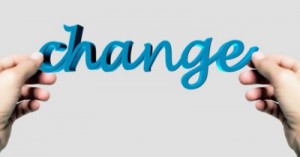In early childhood education, minimum ratios is one of the most insidious drivers of burnout across the sector. When minimum standards become maximum limits, educators are expected to absorb overwhelming cognitive and emotional loads while maintaining composure, care, and compliance. The result? Chronic stress, professional dissonance, and rising attrition. Ratios don’t just affect supervision—they shape every moment of decision-making, relational engagement, and safeguarding. The following article provides research on the effect of ratios on educators.
Ratios as a Burnout Catalyst
- High child-to-educator ratios are consistently linked to emotional exhaustion, depersonalization, and reduced sense of accomplishment.
- Educators report missing subtle cues, delaying decisions, and relying on “workarounds” when ratios are stretched — all of which heighten stress and compromise safety.
- Burnout is not just personal fatigue—it’s a systemic outcome of chronic under-resourcing, unrealistic expectations, and undervaluation of care work.
Cognitive and Emotional Load
- Burnout manifests as emotional detachment, irritability, and reduced empathy—especially when educators are juggling multiple roles without adequate support.
- The emotional labor of managing trauma, challenging behaviors, and family dynamics is intensified by poor ratios and lack of planning time.
- Educators often experience “surface ”acting”—masking distress to maintain calm—which leads to internal depletion and long-term mental health risks.
Cognitive Load: The Mental Weight of Teaching
Cognitive load refers to the mental effort required to process information, make decisions, and manage tasks—all within the limits of working memory. In early childhood settings, this includes:
- Multitasking under pressure: Supervising, documenting, responding to children’s needs, and managing transitions—often simultaneously.
- Split-second decision-making: Choosing how to respond to a child’s distress, a safety risk, or a conflict, often without time to reflect.
- Schema overload: Navigating complex frameworks (EYLF, safeguarding, trauma-informed practice) while trying to apply them in real time.
- Documentation fatigue: Trying to capture meaningful observations while juggling active supervision and engagement.
When ratios are stretched, cognitive load spikes—educators may miss subtle cues, delay decisions, or default to surface-level interactions. This isn’t a failure of skill; it’s a symptom of systemic overload.
Emotional Load: The Invisible Labor of Care
Emotional load is the internal effort required to regulate feelings, maintain composure, and provide emotional support—often in high-stakes or emotionally charged situations. It includes:
- Suppressing distress: Staying calm during incidents, disclosures, or when witnessing harm—even when deeply affected.
- Surface acting: Smiling through exhaustion, masking frustration, or feigning confidence to meet professional expectations.
- Absorbing trauma: Holding space for children’s stories, behaviors, and family dynamics—without adequate debrief or support.
- Moral dissonance: Feeling torn between what’s required (e.g ratio compliance) and what’s ethical or safe.
Emotional labor is often unseen and unacknowledged, yet it’s central to safeguarding, relational pedagogy, and trauma-informed care. When unsupported, it leads to emotive dissonance, burnout, and professional isolation.
The Interaction Between Cognitive and Emotional Load
These loads don’t exist in isolation—they compound each other:
| Scenario | Cognitive Load | Emotional Load |
|---|---|---|
| A child discloses harm | Processing safeguarding protocols, documenting, informing leadership | Managing shock, empathy, fear, and urgency |
| Ratio breach during transition | Recalculating supervision, adjusting plans | Suppressing panic, frustration, and ethical discomfort |
| Challenging behavior escalation | Choosing response strategy, ensuring safety | Regulating one’s own emotions, supporting child’s distress |
When both loads peak, educators may experience decision fatigue, emotional detachment, or freeze responses—all of which impact child safety and educator well-being.
Impact on Practice and Retention
- Burnout leads to higher turnover, absenteeism, and presenteeism—destabilizing relationships and continuity of care.
- Educators in high-ratio environments report lower job satisfaction, diminished motivation, and questioning their career choice.
- Burnout affects child outcomes too: educators become less responsive, less engaged, and more likely to miss safeguarding concerns.
Intersectional and Structural Factors
- Burnout is compounded by low pay, lack of recognition, and limited career progression—especially in female-dominated, underfunded sectors.
- Educators working with children with trauma or disability face disproportionate stress, often without additional support or staffing.
- The invisibility of care work and societal undervaluing of early childhood education deepen emotional strain and professional isolation.
Ratios as an Equity Issue
Ratios don’t impact all children equally. Research suggests:
- Children with trauma, disability, or complex needs require more individualized attention—which high ratios often prevent.
- Educators in under-resourced settings face compounded stress, with ratios intersecting with poverty, systemic bias, and workforce precarity.
Safeguarding and Supervision
When ratios are stretched:
- Supervision suffers: Educators report missing subtle cues, delaying decisions, or relying on “workarounds” that compromise safety.
- Safeguarding risks increase: Burnout and ratio breaches are linked to missed concerns, underreporting, and fear of reprisal.
Toward Reform: From Compliance to Care
The evidence is clear: ratios are not just a number—they’re a reflection of how much we value children, educators, and the relational heart of early learning. Reform must include:
- Ethical, trauma-informed ratio standards that reflect real-world complexity.
- Policy frameworks that embed educator well-being as a safeguarding measure.
- Data-driven advocacy that centers child voice, educator experience, and systemic accountability.
What Helps?
- Reflective supervision, wellness coaching, and trauma-informed PD can buffer burnout—but must be embedded systemically, not offered as band-aids.
- Policy interventions like ethical ratio reform, fair compensation, and mental health supports are essential to shift from survival to sustainability.







 As an Educator in Australia, your pay rate falls under the Children’s Services Award 2010. This award states the minimum amount that an employer can
As an Educator in Australia, your pay rate falls under the Children’s Services Award 2010. This award states the minimum amount that an employer can When working as a qualified Early Childhood Teacher (with a university degree) within a service, your rate of pay will come from the Educational Services
When working as a qualified Early Childhood Teacher (with a university degree) within a service, your rate of pay will come from the Educational Services When working as a Diploma Qualified Educator your pay rate is from the Children's Services Award 2010. This Award states your minimum rate of pay
When working as a Diploma Qualified Educator your pay rate is from the Children's Services Award 2010. This Award states your minimum rate of pay When working as a Cert 3 Qualified Educator, your pay rate is from the Children's Services Award 2010. This Award states your minimum rate of
When working as a Cert 3 Qualified Educator, your pay rate is from the Children's Services Award 2010. This Award states your minimum rate of Educational Leaders play a crucial role in their early childhood service by ensuring that the educational program aligns with best practices and supports the holistic
Educational Leaders play a crucial role in their early childhood service by ensuring that the educational program aligns with best practices and supports the holistic In early childhood education and care, ratios are more than a technicality—they are a frontline safeguard. Every child deserves responsive supervision, emotional connection, and developmental
In early childhood education and care, ratios are more than a technicality—they are a frontline safeguard. Every child deserves responsive supervision, emotional connection, and developmental Here’s a comprehensive Mobile Phone and Smart Watch Policy tailored for early childhood education and care (ECEC) services in Australia, aligned with the latest 2025
Here’s a comprehensive Mobile Phone and Smart Watch Policy tailored for early childhood education and care (ECEC) services in Australia, aligned with the latest 2025 With the new national child safety reforms kicking in on 1 September 2025, early childhood services like yours have a real opportunity to lead the
With the new national child safety reforms kicking in on 1 September 2025, early childhood services like yours have a real opportunity to lead the The Sea of Fish Challenge is a national initiative that invites children, educators, families, and communities to create and display fish artworks as a symbol
The Sea of Fish Challenge is a national initiative that invites children, educators, families, and communities to create and display fish artworks as a symbol Across the early childhood education and care sector, educators are sounding the alarm: current staffing ratios are insufficient to deliver safe, meaningful, and developmentally appropriate
Across the early childhood education and care sector, educators are sounding the alarm: current staffing ratios are insufficient to deliver safe, meaningful, and developmentally appropriate


